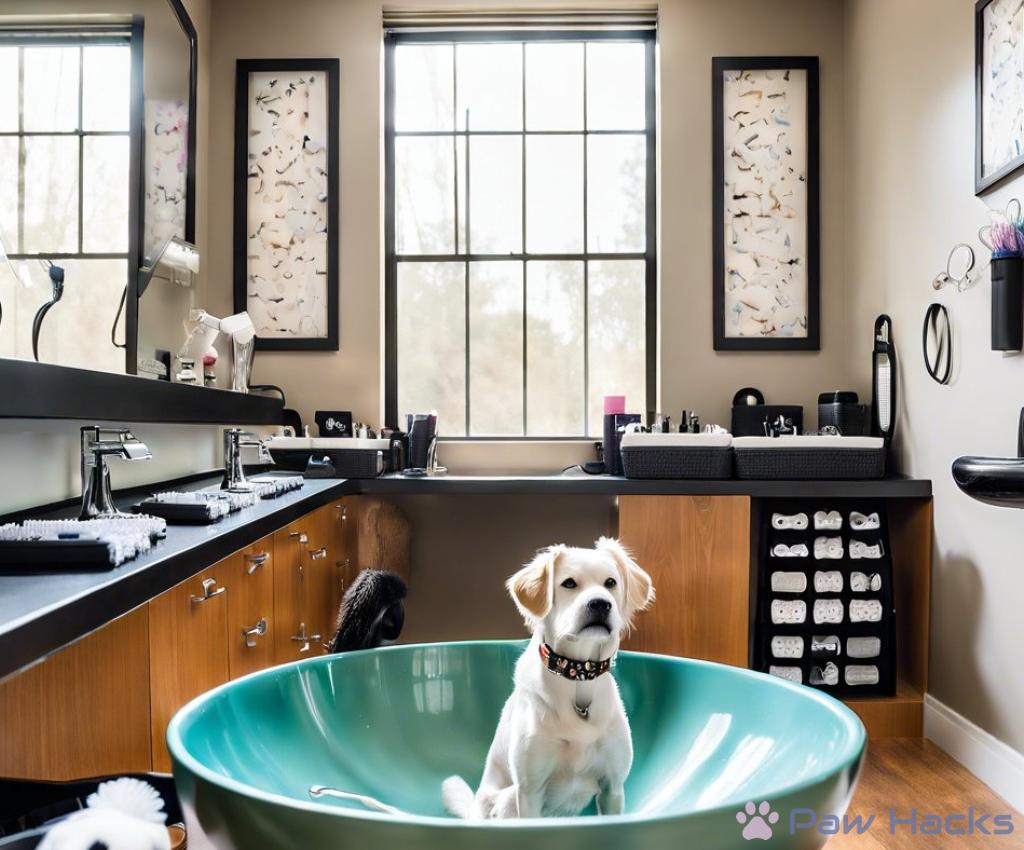Washing Dog Collars and Leashes
The Ultimate Guide to Cleaning Dog Collars: Tips for a Fresh Look

Dog collars and leashes are essential tools for pet owners, but they can quickly become dirty and smelly. Regular cleaning not only keeps your dog’s gear looking fresh but also helps prevent skin irritation and infections that can arise from dirt and bacteria buildup. Understanding the importance of maintenance will encourage you to incorporate a cleaning routine into your pet care regimen.
Dog collars and leashes come in various materials, each requiring different cleaning methods. Knowing how to properly care for each type ensures longevity and maintains their appearance. Here’s a breakdown of common materials and how to clean them:
| Material | Cleaning Method | Tips |
|---|---|---|
| Nylon | Machine wash on gentle cycle or hand wash with mild detergent. | Air dry; avoid direct sunlight to prevent fading. |
| Leather | Wipe with a damp cloth, then apply leather conditioner. | Avoid soaking; use specialized leather cleaning products. |
| Canvas | Hand wash in warm water with mild soap. | Rinse thoroughly and air dry; do not use bleach. |
| Metal | Clean with a soft cloth; use a mild metal cleaner if tarnished. | Dry immediately to prevent rust. |
Having the right tools can make the cleaning process easier and more effective. Here’s a list of essential cleaning supplies to keep on hand:
- Mild detergent: Ideal for removing dirt without damaging materials.
- Soft brush: Great for scrubbing tough stains, especially on canvas and nylon.
- Leather conditioner: Keeps leather collars supple and prevents cracking.
- Microfiber cloths: Perfect for drying and polishing metal components.
- Bucket or sink: For soaking and rinsing collars and leashes.
By using these supplies, you’ll ensure that your dog’s collars and leashes not only look good but also last longer.
Leash Care 101: Keeping Your Dog’s Leash in Top Shape
Just like collars, leashes are essential for your dog’s safety and comfort during walks. Over time, they can accumulate dirt, odors, and even bacteria, which can pose health risks to your furry friend. Regular maintenance not only enhances their appearance but also ensures they remain functional and safe. Caring for your dog’s leash involves more than just cleaning; it also entails proper storage and inspection for wear and tear.
Different leash materials require tailored care to keep them in optimal condition. Below is a comparison of cleaning methods based on the most common leash materials:
| Material | Cleaning Method | Drying Tips |
|---|---|---|
| Nylon | Machine wash on a gentle cycle or hand wash in soapy water. | Air dry away from direct sunlight to prevent fading. |
| Leather | Wipe down with a damp cloth and apply a leather conditioner. | Let it air dry; avoid water exposure. |
| Canvas | Hand wash in warm soapy water; use a soft brush for stains. | Rinse well and air dry; do not wring. |
To extend the life of your dog’s leash, consider these proactive care tips:
- Regular Inspection: Check for frays, tears, or any signs of wear. Replace if necessary.
- Proper Storage: Store leashes in a cool, dry place to prevent mold or mildew.
- Use of Leash Accessories: Consider using a leash wrap or holder to keep it organized and tangle-free.
By following these simple yet effective practices, you can ensure that your dog’s leash remains in excellent condition, providing both safety and style during every adventure.
Washing Materials: Understanding the Best Fabrics for Dog Gear
When it comes to washing dog collars and leashes, the fabric they are made from plays a crucial role in determining the appropriate cleaning methods. Each material has its unique properties, which can greatly influence both the appearance and longevity of the gear. Understanding the different types of fabrics used in dog collars and leashes not only ensures you clean them effectively but also helps maintain their quality over time.
Nylon is one of the most popular materials for dog collars and leashes due to its durability and resistance to wear. It is lightweight, easy to clean, and available in a variety of colors and designs. To wash nylon gear, you can either toss it in the washing machine on a gentle cycle or hand wash it with mild detergent. Be sure to air dry it away from direct sunlight to prevent fading. Regular cleaning will help keep the nylon looking fresh and vibrant, making it an excellent choice for active dogs.
Leather collars and leashes offer a classic look and exceptional durability, but they require special care. Unlike synthetic materials, leather can dry out and crack if not maintained properly. To clean leather gear, gently wipe it down with a damp cloth, and follow up with a leather conditioner to keep it supple. Avoid submerging leather in water, as this can lead to damage. If properly cared for, leather can age beautifully, adding character to your dog’s accessories.
Canvas is another great material for dog collars and leashes, known for its strength and versatility. It can withstand rough use, making it suitable for adventurous pups. Cleaning canvas requires a bit more effort; hand washing in warm, soapy water is recommended, followed by a thorough rinse. Air drying is essential to avoid shrinkage and maintain its shape. The texture of canvas can also give your dog a unique style, setting them apart from others on the block.
In summary, knowing the right cleaning techniques for various fabrics is vital in maintaining the functionality and appearance of your dog’s gear. Whether you opt for nylon, leather, or canvas, each material has its own set of advantages and requires specific care. By investing time in understanding your dog’s collar and leash materials, you’ll ensure they remain safe, stylish, and ready for any adventure.
Stains Be Gone: Effective Techniques for Removing Tough Grime from Collars and Leashes
Dog collars and leashes are not just accessories; they are daily essentials that endure a lot of wear and tear. From mud and grass stains to food spills and sweat, these items can quickly become unsightly. Understanding the types of stains you encounter will help you choose the right cleaning method. Certain stains may require specific treatments, while others can be tackled with general cleaning techniques.
When faced with tough grime, it’s essential to approach the cleaning process with targeted solutions. Here’s a look at common stains and how to effectively remove them:
- Mud and Dirt: Allow the mud to dry before scraping it off. Follow up with a gentle scrub using a soft brush and warm, soapy water.
- Food and Treat Residue: Create a paste with baking soda and water. Apply it to the stain, let it sit for 15 minutes, and then scrub gently with a cloth.
- Odor Removal: For persistent odors, soak the collar or leash in a solution of equal parts vinegar and water for 30 minutes before washing.
Even with targeted stain treatments, a comprehensive cleaning routine is essential for maintaining your dog’s gear. Here are some effective techniques to ensure a deep clean:
- Soaking: For a thorough clean, soak nylon and canvas collars and leashes in warm, soapy water for about 30 minutes. This helps loosen grime and makes scrubbing easier.
- Brushing: Use a soft-bristled brush to tackle stubborn stains, particularly on canvas and nylon. Be gentle to avoid damaging the fabric.
- Rinsing and Drying: Rinse thoroughly with clean water to remove all soap residues and then air dry in a shaded area to prevent fading.
By implementing these stain removal techniques, you can keep your dog collars and leashes looking fresh and vibrant, ensuring they are not only functional but also stylish for every outing.
Maintaining Hygiene: The Importance of Regularly Washing Your Dog’s Accessories
When it comes to caring for our furry friends, hygiene plays a crucial role, especially concerning their accessories like collars and leashes. These items are in constant contact with your dog’s skin and fur, collecting dirt, oils, and bacteria over time. Regular cleaning is not just about aesthetics; it’s about ensuring your pet remains healthy and comfortable. By understanding the significance of hygiene in your dog’s gear, you can take proactive steps to create a safer environment for your beloved companion.
Leaving collars and leashes unwashed can lead to a myriad of health issues for your dog. The accumulation of bacteria and fungi can cause skin irritations, rashes, and infections. Dogs often scratch or bite at their collars when they are uncomfortable, which can exacerbate any existing issues. Furthermore, odors from sweat and outdoor adventures can become overwhelming, making walks less enjoyable for both you and your pet. A clean collar and leash not only look better but also help prevent these uncomfortable scenarios.
To ensure the hygiene of your dog’s accessories, it’s essential to establish a regular cleaning routine. Consider setting a schedule that aligns with your dog’s activities; for example, you might choose to wash their gear weekly after outdoor play sessions or daily if your dog loves to roll in the mud. Consistency is key—the more regularly you wash their collars and leashes, the less buildup you will encounter. When cleaning, take the time to inspect the gear for any signs of wear or damage, ensuring that it remains safe for use.
In addition to routine washing, consider incorporating specific cleaning techniques based on the materials. For instance, while nylon collars can withstand machine washing, leather requires a gentler approach to maintain its integrity. This targeted care not only preserves the appearance of the gear but also extends its lifespan. When you prioritize hygiene and careful maintenance, you create a healthier and happier experience for your dog.
Share this content:



